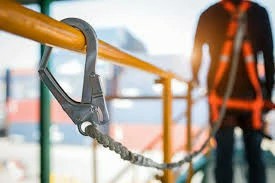Emergency Rescue Planning for Working at Heights: A Key Element in Ensuring Safety
When working at heights, the risk of accidents increases significantly. Whether it’s construction, maintenance, or other high-altitude work, having an emergency rescue plan in place is not just an option—it’s a necessity. This blog explores the essential components of emergency rescue planning and its integral role in Working at Heights safety training.
The Importance of Emergency Rescue Planning
Effective emergency rescue planning can mean the difference between life and death. The unpredictability of working from heights requires immediate and comprehensive response strategies. Here are some key reasons why proper planning is critical:
- Risk Reduction: Having a plan in place minimizes risks associated with falls and other related accidents.
- Worker Confidence: When workers know there’s a reliable plan for emergencies, they can focus on their tasks without added anxiety.
- Regulatory Compliance: Many industries are required by law to have safety plans, ensuring legal compliance and ethical responsibility.
Self-Rescue Techniques: Empowering Workers
Self-rescue refers to techniques that individuals can utilize to extricate themselves from potentially life-threatening situations. Mastering these techniques can be vital and often involves:
- Training Programs: Participating in Certified Working at Heights Training or a Working at Heights Safety Course to ensure familiarity with equipment and practices.
- Practice Scenarios: Regularly practicing emergency drills to develop muscle memory and reactions to emergency situations.
- Knowledge of Equipment: Understanding the limits and mechanics of harnesses, lanyards, and other fall protection systems.
Popular Self-Rescue Techniques
- Controlled Descent: Using a descender device to lower oneself safely to the ground.
- Escape Systems: Deploying built-in self-rescue systems designed for quick release and descent.
- Emergency Retrieval: Using nearby equipment or structures to assist in self-rescue, such as nearby scaffolding or ladders.
Employer Responsibilities: Building a Culture of Safety
In addition to providing training, employers play a crucial role in implementing effective workplace safety measures. Key responsibilities include:
- Establishing Rescue Plans: Creating detailed procedures that outline how to respond to accidents.
- Providing Training: Ensuring that all workers complete a comprehensive Working at Heights Course, reinforcing safe practices and rescue procedures.
- Regular Equipment Checks: Ensuring all safety equipment and rescue gear are in working order and meet safety standards.
Emergency Response Procedures: Quick and Efficient Actions
Emergency response procedures are essential during a crisis. A well-documented plan should include:
- Immediate Notification: Clear protocols for notifying emergency services, co-workers, and supervisors.
- Site Access: Information about securing the site for rescuers to safely enter and manage the situation.
- Post-Incident Review: Analysis of the incident afterward to improve future response strategies and conduct better training.
Real-World Examples of Effective Emergency Rescues
Studying successful rescues can provide invaluable insights into effective emergency planning. Consider the following case study:
- Case Study: Construction Site Rescue
In a recent incident at a high-rise construction site, a worker experienced a fall but was able to initiate a controlled descent using a self-rescue system. His training allowed him to successfully lower himself while emergency services were notified, enabling a quick recovery.
Integrating Emergency Plans into Working at Heights Training
To ensure safety, businesses must integrate emergency rescue planning into their working at heights training programs. This integration can include:
- Regular Training Refreshers: Offering frequent update courses to ensure skills remain sharp.
- Simulations: Conducting full-scale drills to prepare workers for real-world scenarios.
- Feedback Loop: Utilizing feedback from workers to continuously improve planning and training strategies.
Conclusion: Take Action Now for a Safer Workplace
Emergency rescue planning is an indispensable part of working at heights safety training. By implementing robust rescue techniques, outlining employer responsibilities, and establishing clear emergency protocols, workplaces can better safeguard their employees. Act now to evaluate and enhance your emergency plans, incorporating them into your Working at Heights Course.
For more guidance or to enroll in a course, contact us at [email protected].



 349,500 Offered Certificates
349,500 Offered Certificates
 24/7 Online Training
24/7 Online Training
 Money Back Guarantee
Money Back Guarantee
 Fully Accredited Courses
Fully Accredited Courses
